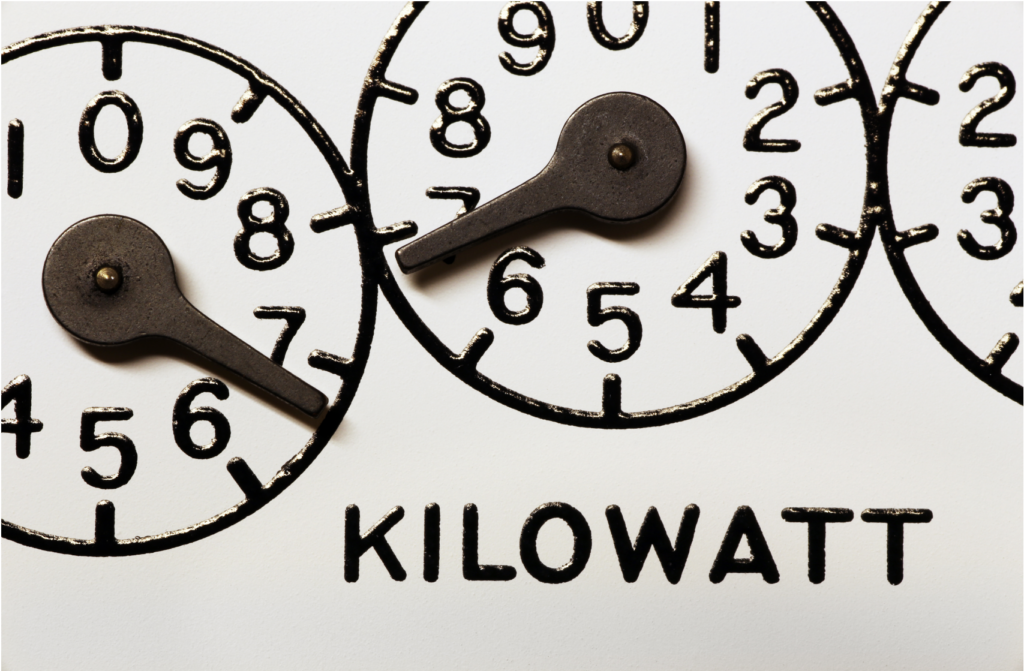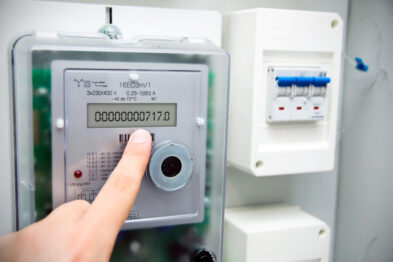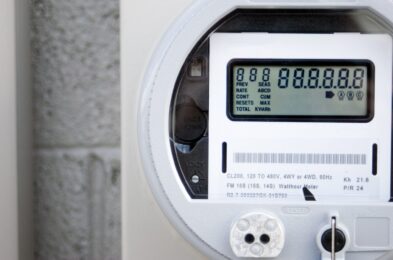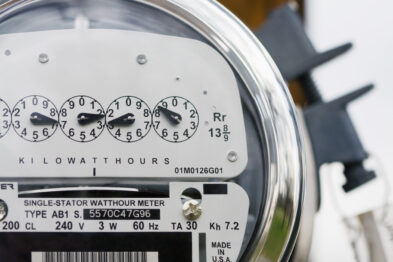CA Title 24 // NYC LL88 // Seattle 1202.1 // ASHRAE 90.1
ASHRAE (American Society of Heating, Refrigerating and Air-Conditioning Engineers) Standard 90.1 has been a benchmark for commercial building energy codes in the U.S and a key basis for codes and standards around the world – for more than 35 years. It provides the minimum requirements for energy-efficient design of most buildings (except low-rise residential buildings) and offers the minimum energy efficiency requirements for design and construction of new buildings and their systems, new portions of buildings and their systems, and new systems and equipment in existing buildings, as well as criteria for determining compliance with these requirements.
Taking a closer look at ASHRAE as well as other energy standards, you’ll note that historically, the emphasis was on performance levels for equipment and energy use on a granular level, with little reference to how that should be measured. This reality has started to change, however, as a result of multiple factors.
First, groups like the U.S. Green Building Council and ASHRAE have brought out recommendations and requirements of how and what to measure while secondly, and perhaps even more importantly, much of the submetering equipment has become more affordable, particularly for multi-circuit meters.
As a result, newer regulations have emerged around how to measure, alone with what to meter.
Let’s take a high-level look at how ASHRAE 90.1-2016, which several states have adopted, has influenced how and what is monitored.
- CA Title 24 refers several things, including the tracking of kWh and KW and for the disaggregation of circuits – to allow for metering of different load types.
- NYC Local Law 88 requires that submeters be installed by January 1st, 2025, for any building over 50,000 feet, for any tenant who leases more than 10,000 square feet of space.
- Seattle Energy Code requires that an Energy Data Display System collects the energy use data for the total building, and separately for each of the the end-use categories, for spaces over 2500 square feet in any building over 20,000 square feet.
Since 2019, ASHRAE 90.1, now also requires measurement devices to be installed to monitor different load types in buildings over 25,000 square feet for tenants who occupy more than 10,000 square feet.
Unfortunately, not all states operate by the same Standard; Image 1 illustrates which states have adopted one of the five ASHRAE 90.1 Standards, and which have no adopted any.
Historically, we have seen that energy efficiency rules developed in either New York City or California tend to spread across the country and become the standard in many other states, so even if your state has not yet adopted a newer standard, we should continue to take a closer look at what might be coming should your state decide to follow states like California and New York.
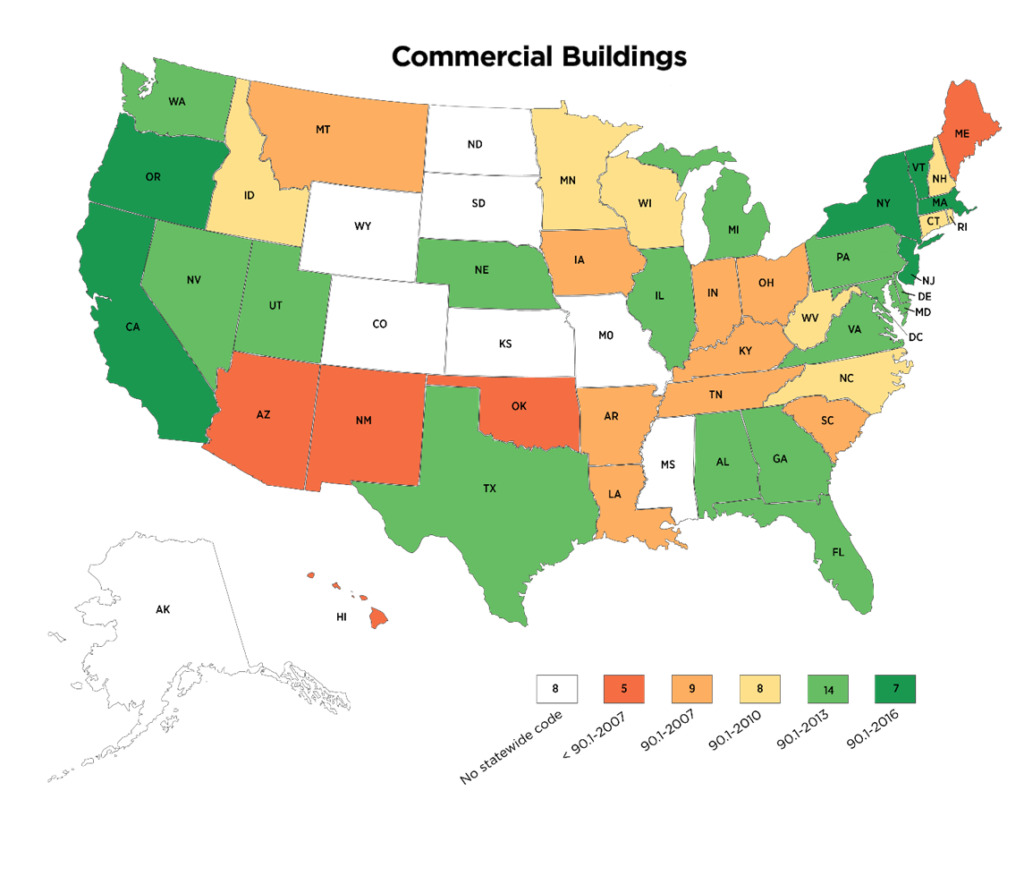
In short, the easiest way to prepare for any changes is to assume all tenant spaces will need to be sub metered. There is some differentiation between square footage, with ASHLRAE and New York City benchmarking at 10,000 square feet and Seattle going with 2500 square feet. But outside of that, expect some basics in terms of the load types monitored separately:
ASHRAE also requires that different load types are monitored separately including:
- Total Energy
- HVAC Systems
- Interior Lighting
- Exterior Lighting
- Receptacle Circuits
(These types all fall under “Mandatory Provisions”, along with automatic receptacle control)
California Title 24 goes a little further with load types and requires the ability to separately monitor:
- Water Systems and Pumps
- Elevators and Escalators
- Electric Vehicle charging stations
Other large loads, such as commercial kitchens, all need to be monitored separately but in aggregate
All of the different rules require that electrical energy be measured every 15 minutes and reported at least hourly, daily, monthly and annually, and that the data be retained for at least 36 months.
The Standards also require that the building operations team and tenants have access to the data, and that the data should include consumption and demand, with the time frame being configurable.
Some rules additionally call for a graphical display of current, average, and peak values for consumption, and demand which should facilitate trending and anomaly identification. It is also recommended that the EMS/BAS system be used to facilitate the collection of the data.
Clearly, there is going to be a lot more submeters in buildings over the next few years, leading many to ask “How to meter all of these different loads for each tenant or building system without having to install hundreds of meters?”
It’s a question that Genea takes seriously, and we’ve created our Submeter billing and reading software for this specific reason. This allows our clients to easily install multi-circuit meters and brand circuit meters, which allow you to monitor all circuits on a panel; then, using Genea’s submeter billing software for he different load types, you can aggregate usage for billing and reporting purposes.
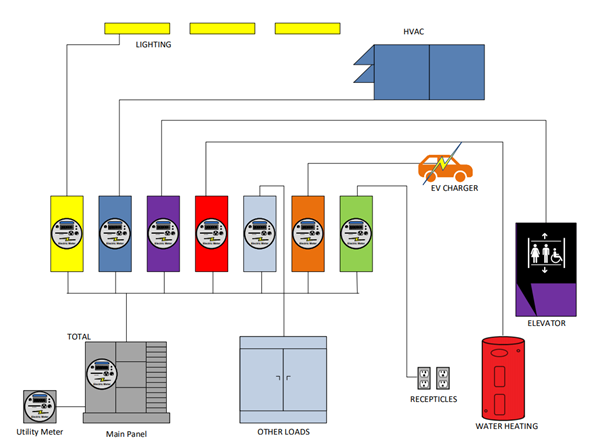
The starting point for creating such a system is to pull up your single line drawing for each utility type, which should be in your building drawing/documentation (Find out how here).
Once you have your single line drawing, you can identify which panels serve base building systems and which feed tenant systems.
Next, you can easily see which load types are fed and, if there are different load types on each panel, where to assign a multi-circuit meter.
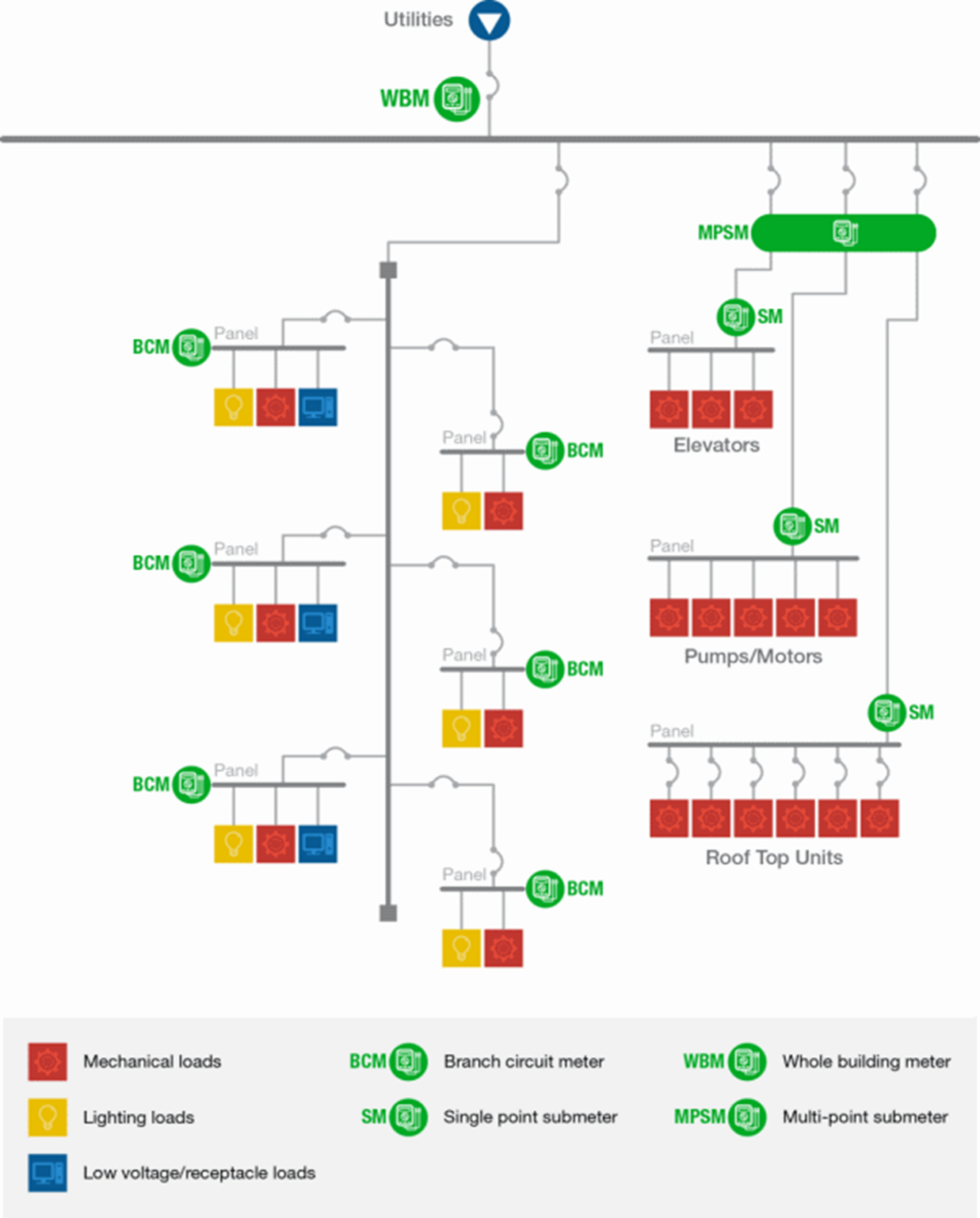
If you have a panel that is all one load type, take a look at the circuit breaker list for each panel; you may find that a panel is made up solely of receptacles for a single tenant, in which case, one meter can be used for the whole pane. If it is all receptacles but for multiple tenants, then you’d need a meter for each tenant (or at least an element of a multi-circuit meter for each tenant).
Next, look at multi-point meters and branch-circuit meters (More information available here).
Once you have the data collected, you can produce bills for each tenant. Or, you can report based on load type, utility type, etc.
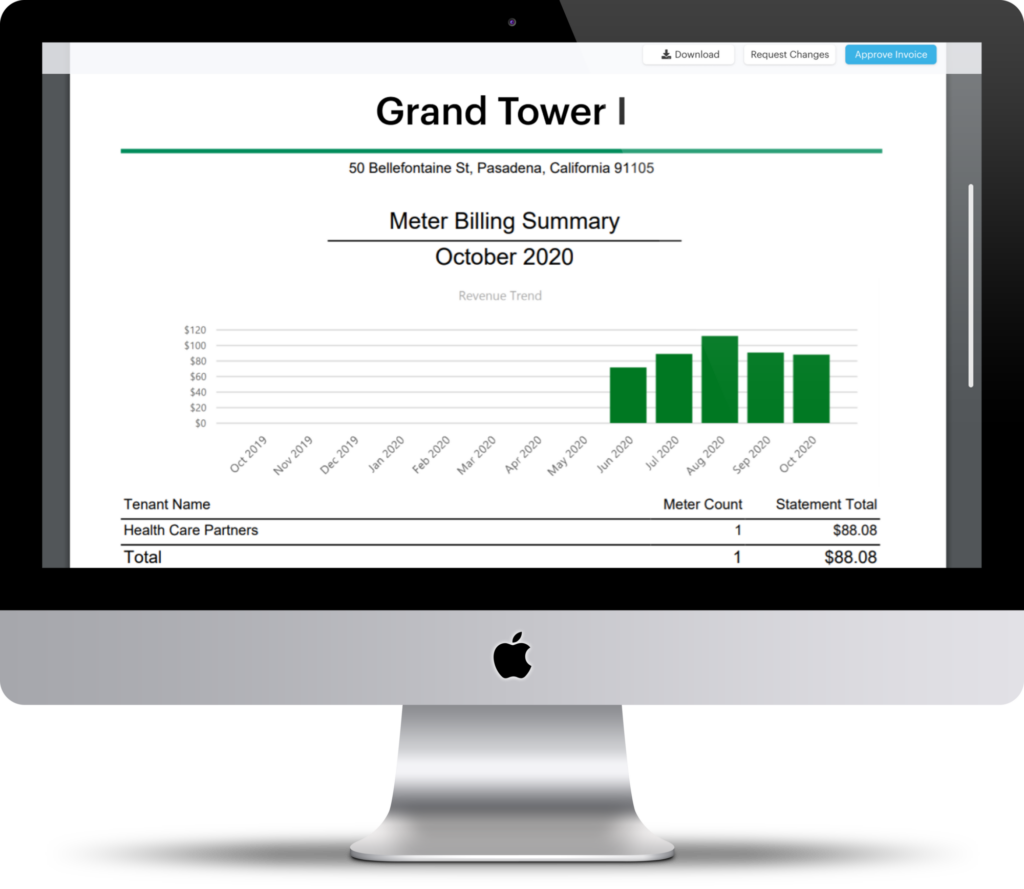
Software such as Genea’s Automated Submeter Billing and Reading service can help manage the different load types and streamline your reading and billing process. This allows your property team to eliminate the manual processes and ensure accurate billing statements for tenants each month. To learn more, request a demo below.
